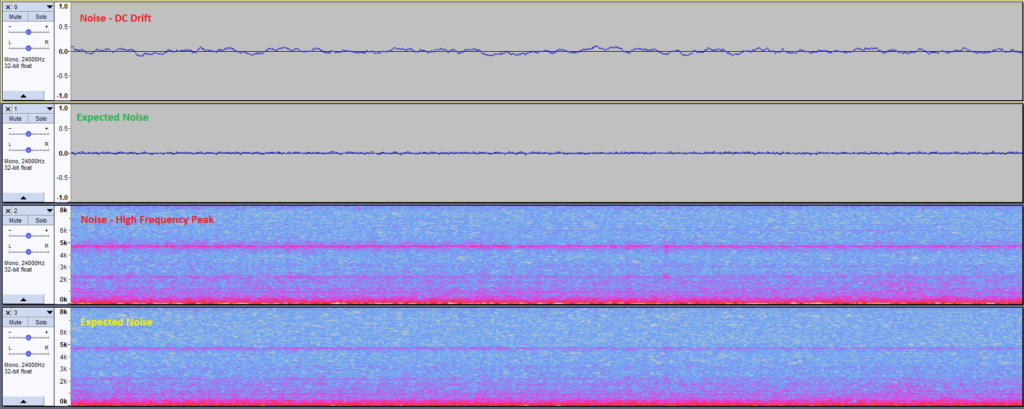The far-field acoustic model has sound propagating as a plane wave, while sound energy dispersed across a microphone array is uniform. Utilizing the following equation:
.
The microphone signals () should be identical except for the phase offset at different microphone positions. Acoustic beamforming algorithms make use of this model in their design. In practice, if the microphone signals do not adhere to this model, then the beamforming performance will be compromised.
It is not uncommon for microphone signals to have different electrical noise characteristics. The image below shows a microphone signal with a strong DC offset drift issue, and another microphone signal with peak noise. A DC offset of this magnitude can have a negative impact on the control logic of the beamformer, such as a voice activity detector. Since, this type of noise exists in the inaudible frequency range, a high pass filter can be applied to all microphone signals from the microphone array. By prefiltering the microphone signals the overall performance of the beamformer will be improved.
A microphone signal that has a peak frequency in the audible signal range due to an electrical noise or a mechanical vibration, can be quite annoying and cause masking issues. Ideally, these issues should be addressed in hardware and mechanical design, but a notching filter can be applied as prefilter to microphone signals to alleviate and prevent it from corrupting the beamforming output.
